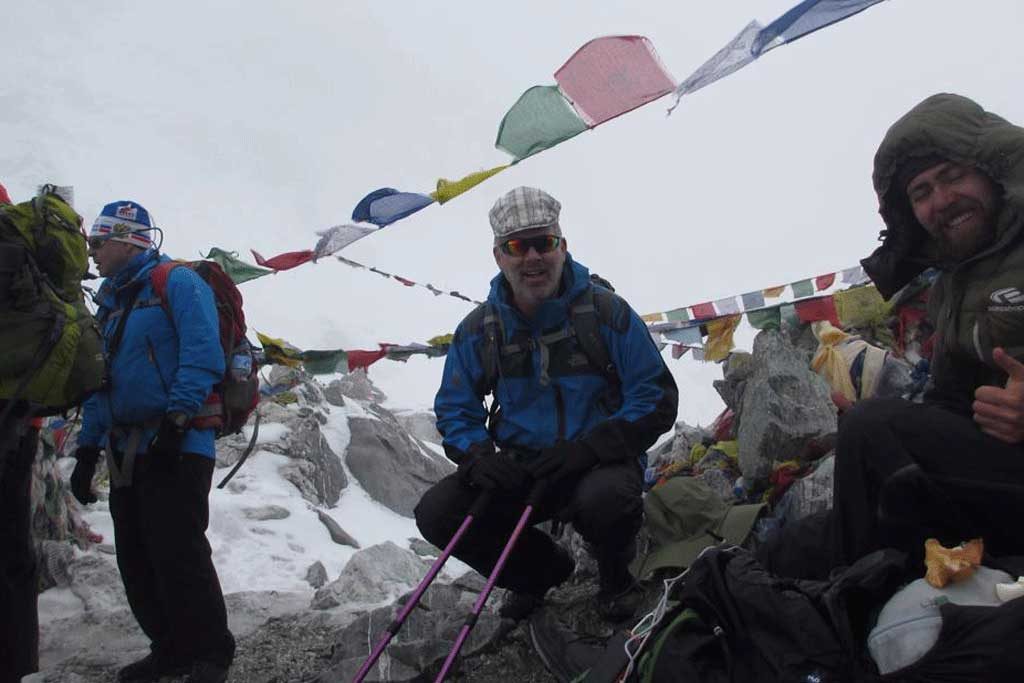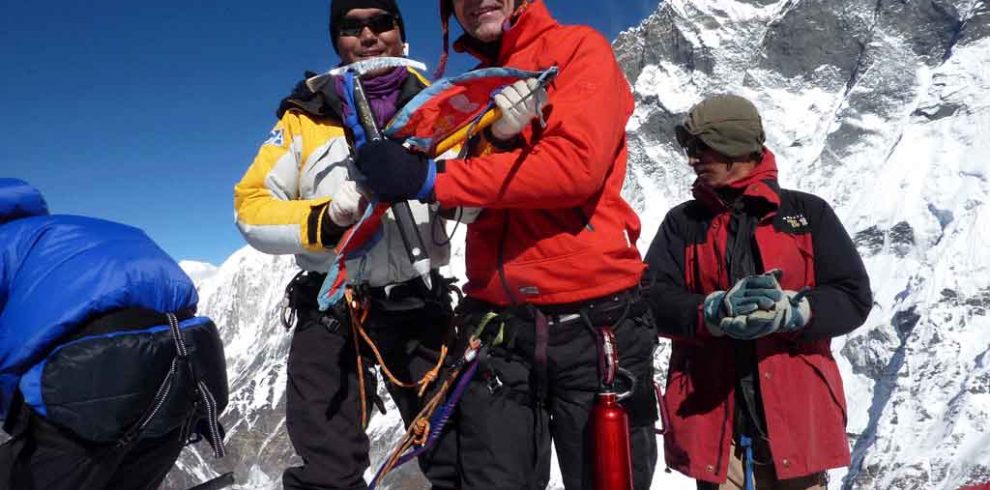Everest region has become a popular destination for short trekking trips, longer treks, high passes, adventure peaks, challenging expeditions of mountains above 8,000 meters including the highest Mt. Everest (8,848m/29,028ft), the story of Yeti and the Sherpa culture.
If you want to achieve a summit on a trekking peak and spend as much time as possible in the Everest region including trekking and crossing over 3 high passes, here we have designed a trek combined with a peak to fulfill your expectations.
The trip includes Renjola and Chola pass, Everest Base Camp, Kalapatthar, Kongma la pass and then climbing of Island Peak. Therefore, we have named this trip as ‘Three Passes with Island Peak Climb’. Our Everest three high passes trek together with Island Peak climb provides an all-round experience of the famous Khumbu Valley.
This trip refers to as a hard trek advancing to the Renjo la Pass (5,340m/17,520ft), Gokyo Ri (5,360m/17,586ft) and the tough Chola Pass (5,330m/17,487ft) making a circuit of Tawache (6,367m/20,890ft) and Cholatse (6,440m/21,129ft), Everest Base Camp (5,364m/17,598ft), Kalapatthar (5,545m/18,192ft) and finally Kongma la Pass (5,535m/18,160ft).
The trip is also a blend of adventure, risks, Sherpa culture and their social life. The summit of Gokyo Ri (5,360m/17,586ft) provides a lifetime memory from where a 360 degree view of Mt. Cho Oyu, Mt. Everest and Mt. Makalu is truly panoramic.
Participation Statement for Three Passes with Island Peak Climb
Trekking Encounters recognises that climbing, hill walking and mountaineering are activities with a danger of personal injury. Participants in these activities should be fully aware of and accept these risks and be responsible for their own actions and involvement.
Weather Conditions
The post and pre monsoon conditions experienced from October into mid – December/April-May are usually very fair, dry and stable. Daytime temperatures are pleasantly warm in the valleys (20-30C) whilst cool to very cold (especially with wind chill). Night time temperatures are cold to very cold (possibly as low as minus 30C) and you should make sure you have a very warm sleeping bag (-30C), an expedition weight down jacket and good quality down mitts.
High Altitude Warning
Safety is the major concern during all our expeditions and leaders are very careful of every forth coming situations. However, there are dangers involved in climbing 6000m, 7000m and 8000m peaks that cannot be avoided. If any emergency develops, our guides will do their best to save your life.
The extreme altitude, weather conditions, cold and other mountaineering hazards ensure high altitude climbing has unavoidable risks at the best of times, members of our expeditions need to be aware of these dangers and accept that they are an integral part of high altitude mountaineering.
Equipment
A detailed equipment list is provided on booking. Arrangement of specialist items such as a four season sleeping bag and down jacket are essential before the expedition starts. We only use high quality expedition tents and gears where camp support is necessary.
Expedition Support
Our experienced leaders will head the expedition. We employ a long established loyal team of Sherpa staff who are supported by an equally professional team of cooks, with excellent facilities and hygiene creating a very comfortable Base Camp.
Overview
- One of Nepal’s most popular trekking peaks bounded by glaciers
- Outstanding views of Lhotse, Baruntse and Makalu from the top
- The mountain bears a resemblance to an island in a sea of ice
- British Expedition team made the first ascent in 1953
- Crossing of the 3 major high passes-Renjo la, Chola and Kongma la
- A side trip to the world famous Everest Base Camp and Kalapatthar










